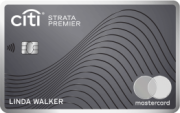The content is accurate at the time of publication and is subject to change.

Frequent travelers to Europe, who prefer cashless method of paying for goods and services there, are often charged an extra fee known as foreign exchange fee. While it equals to only 3% of the transaction made in the original currency, it may be summed up into a small fortune after 2 weeks of staying and making purchases in the foreign country.
The mechanism the foreign transaction fee is applied is still an unclear point for most card users and oftentimes arouses their indignation. Also, the inconsistency of the charges stirs suspicions as to how fairly each individual's transaction is rated. A heap of letters from our readers asking for explanation and advice prompted us to give a gist with some of the more controversial points highlighted.
It is rather important to distinguish the issuing bank and the payment system it uses to make card business. Once you know they are different institutions, it becomes easier to clarify some questions and settle problems. In case of foreign exchange fees, like it happens with balance transfers or instant approval applications, it is principally the bank you apply at that charges the gouging 3% on top of the purchase price.
According to the current actual rate, Visa and MasterCard charge only a 1% fee for foreign-currency purchases, with the extra 2% added by the bank just because it brings more interest and is not prohibited by any law. There are a few exceptions, with notably Capital One Bank, that do not impose that extra 2% on transactions made outside the USA. American Express is very liberal, adding the lower 2% and dropping it for foreign purchases priced in US dollars.
A customer may be confused when paying for things in US dollars either online or abroad. Regardless of the no need to perform the conversion function, a bank does add that 3% on Visa and MasterCard transactions. Isn't it sort of a gouge when one pays a foreign exchange fee while no currency conversion is actually involved? Yes, it is just as unfair as the extra 2% initiated by the self-profit banks.
But this is how banks get their cut - they add the 3% foreign exchange fee regardless of the original transaction's currency; determinant is the location of the merchant bank that processes the credit card charge.
No wonder there's a lot of consumer's misunderstanding and disappointment when it comes to some online credit transactions and foreign transactions originating in US dollars.
Apart from the foreign exchange fees, American customers may face other financial difficulties when paying abroad, in Europe in particular. With the appearance of smart Visa cards there that require both the PIN and the signature, merchants automatically shift the requirement onto US buyers. There is a catch.
US banks rate the usage of a card PIN as a cash advance and so charge the fees associated. Visa and MasterCard insist that if the cardholder wants to avoid the hefty cash advance charges, they should refuse from using the PIN and ask the merchant to process the transaction without it. Otherwise the traditional cash would be a far safer and cheaper payment tool than a rewards plastic card anywhere outside the United States.





